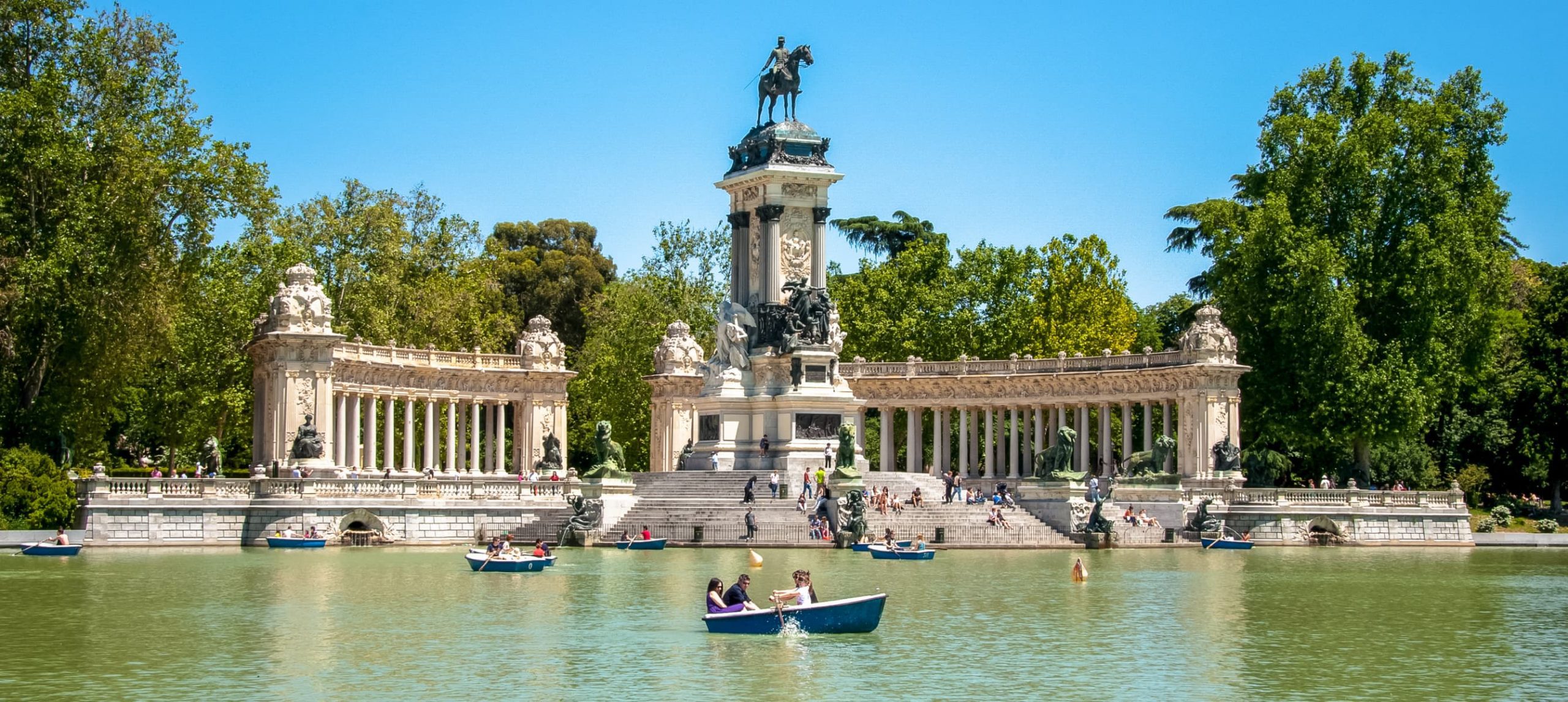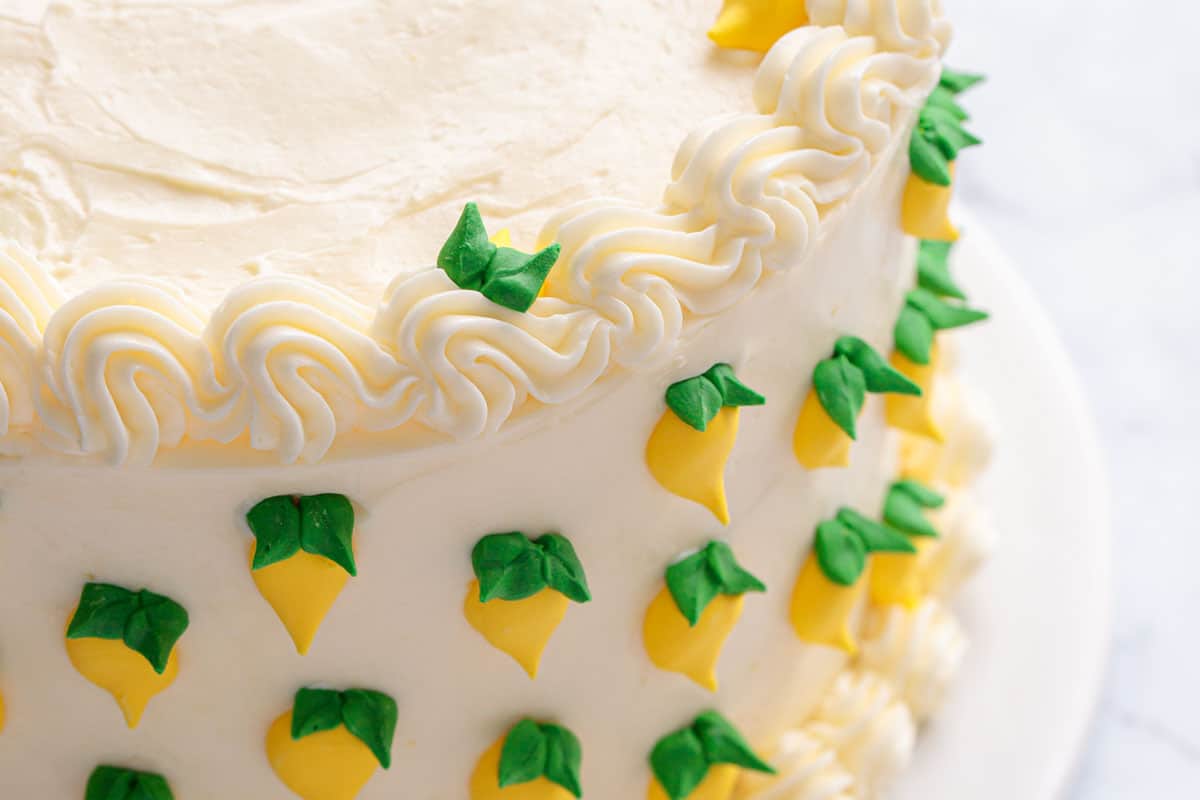Exploring The Beautiful Shinjuku Gyoen National Garden In Tokyo
Hidden amidst Shinjuku’s towering skyscrapers and bustling alleys lies a tranquil oasis: Shinjuku Gyoen National Garden. This historic park, dating back to the Edo period, has been a beloved retreat for generations of Tokyoites. Just a short walk from...
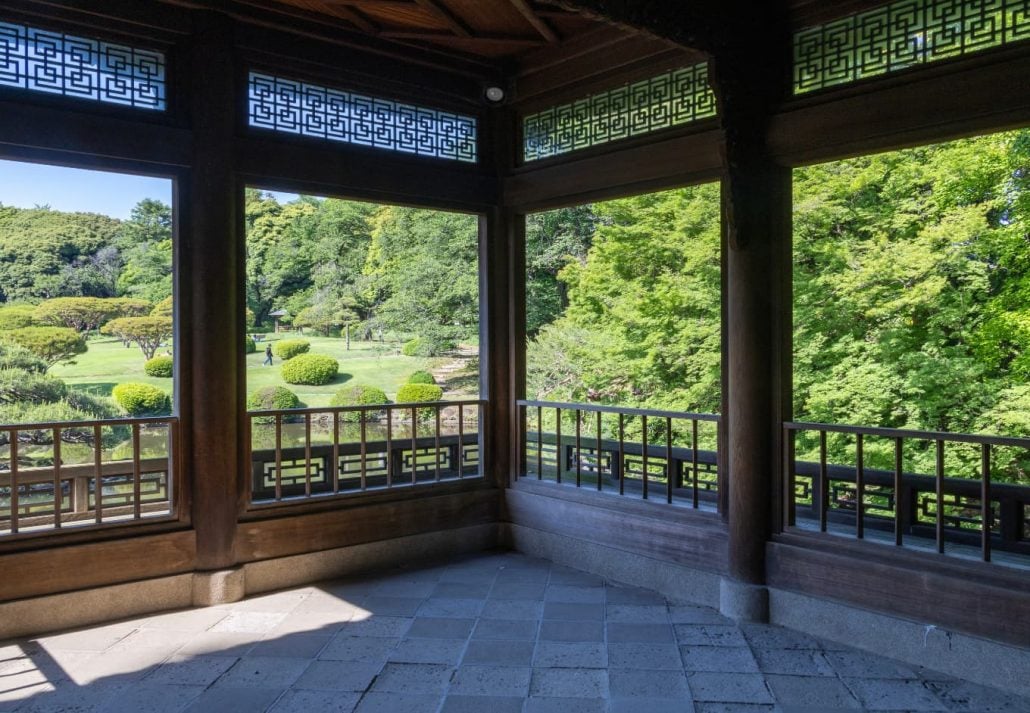
Hidden amidst Shinjuku’s towering skyscrapers and bustling alleys lies a tranquil oasis: Shinjuku Gyoen National Garden. This historic park, dating back to the Edo period, has been a beloved retreat for generations of Tokyoites. Just a short walk from Shinjuku Station, the garden is a melting pot of traditional Japanese, English, and French styles, offering something for every visitor.
With its spacious lawns, winding paths, and picturesque ponds, Shinjuku Gyoen is the perfect place to relax, picnic, or simply enjoy a moment of peace in the heart of the city. Let’s explore the attraction in-depth.
Visitor Information
| 📌 Location | 11 Naitomachi, Shinjuku City, Tokyo 160-0014. Find on map |
| 🎟️ Admission | 500 yen |
| ⏰ Opening Hours | ✦ 9 AM-6 PM (Mar 15-Jun 30 | Aug 21-Sept 30) ✦ 9 AM-7 PM (Jul 1 to Aug 20) ✦ 9 AM-4:30 PM (Oct 1 to Mar 14) ✦ Closed on Mondays (Dec 29 to Jan 3) |
| 🚗 Getting There | Shinjuku Gate is a 5-minute walk from Shinjukugyoenmae Station on the Marunouchi Subway Line |
The History of Shinjuku Gyoen National Garden

Bestowed upon feudal lord Naito by the shogun in 1772, the land was developed into a garden. However, its character has undergone substantial alterations. Following the Meiji Restoration, it transitioned from an experimental agricultural hub to a botanical garden, ultimately becoming an imperial garden dedicated to entertaining visitors to the city. Unfortunately, it was severely damaged during the World War II air raids but was meticulously restored, later opening to the public as a national park in 1949.
A Detailed Walkthrough of Shinjuku Gyoen National Garden
The three distinct styles of gardens
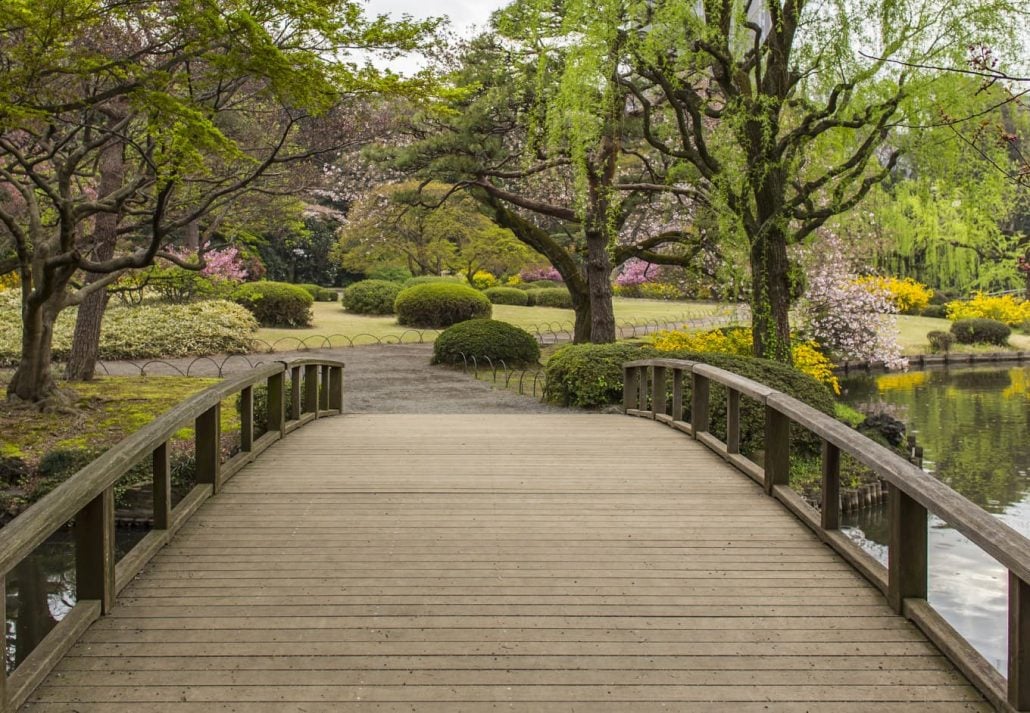
Japanese Garden: The oldest of the gardens, the Japanese traditional garden features large ponds, small islands linked by bridges, and winding paths perfect for leisurely strolls. Dotted with charming teahouses, the garden provides ample opportunities for relaxation. The Taiwan Pavilion, a wedding gift from the Taiwanese community to the Showa Emperor, adds a surprising touch to the Japanese aesthetic.
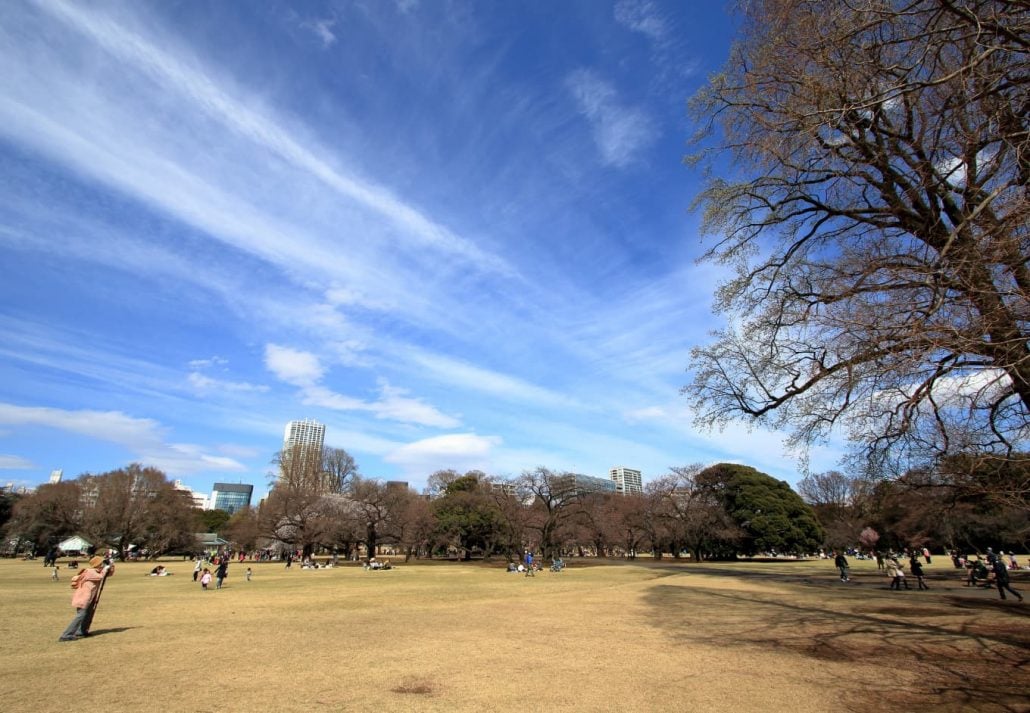
English Landscape Garden: The English Garden is heralded by a sprawling lawn, a beloved gathering spot, especially during springtime viewing of cherry blossoms. Perfect for basking in the Japanese sun, this oasis also houses a Western-style building, a survivor of the Second World War alongside its Chinese counterpart.
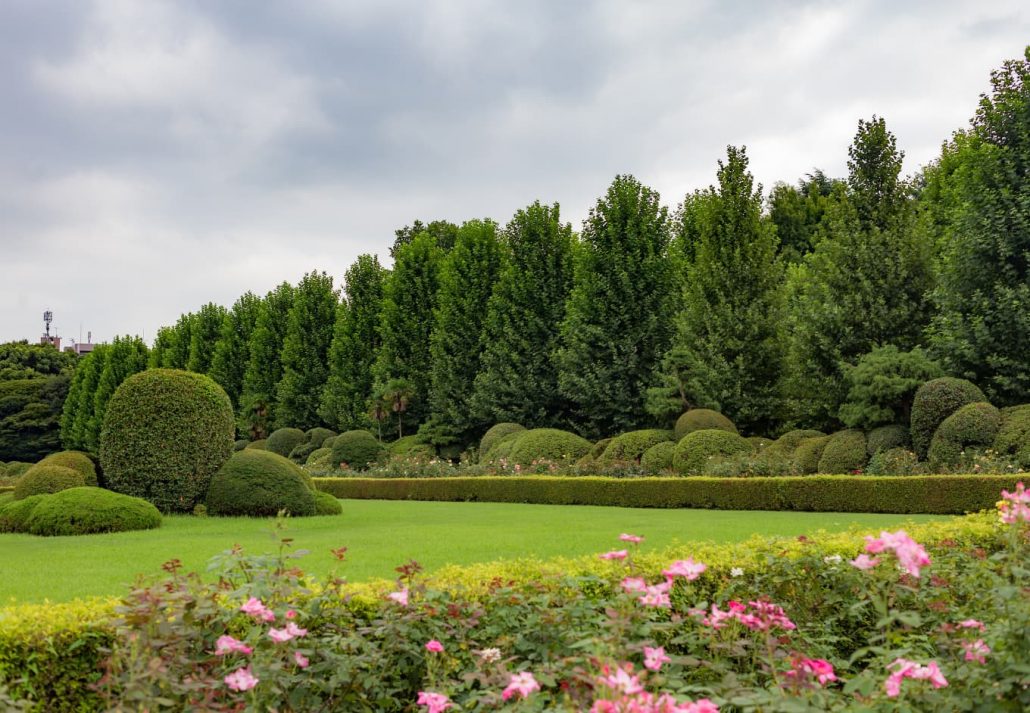
French Formal Garden: The park’s western side is home to the exquisite French Garden. This elegant retreat boasts a perfectly symmetrical layout and over 100 varieties of flowers that change with each season. May is a particularly enchanting time when more than 500 rose bushes burst into bloom. This secluded oasis offers a unique escape, transporting visitors to a different world.
The three gates
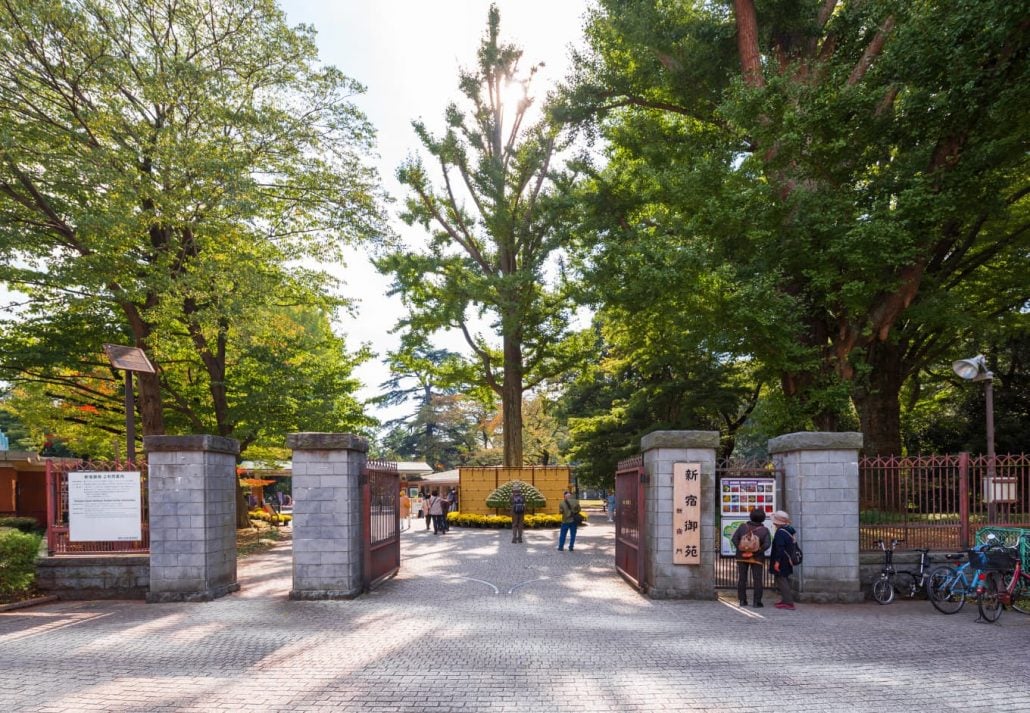
The garden has three entrances that are strategically placed for convenient access. The main entrance, Shinjuku Gate, is a 10-minute walk from Shinjuku Station or a 5-minute walk from Shinjuku Gyoen-mae Station. It leads visitors toward the Japanese Garden’s upper section. The Okido Gate, a 5-minute walk from Shinjuku Gyoen-mae Station, provides entry near the greenhouse and Tamamo Pond. Finally, Sendagaya Gate, a 5-minute walk from Sendagaya Station, offers access to the cherry tree area and Maple Hill, situated between the Japanese and French Gardens.
Other areas of interest
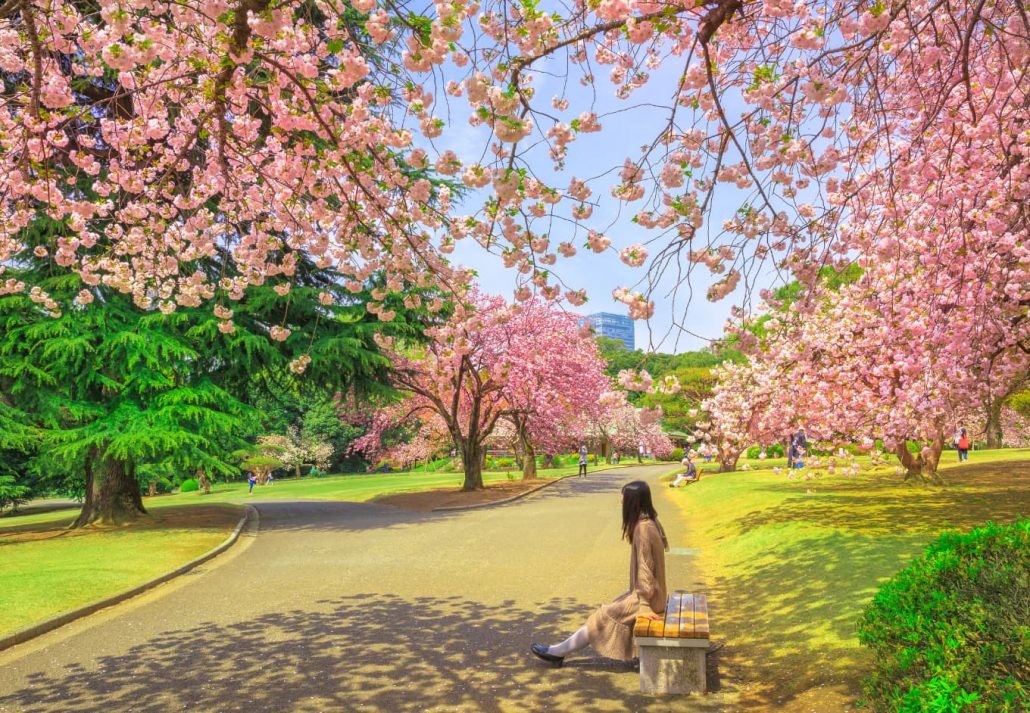
Beyond the garden’s three main attractions, you’ll discover a variety of smaller, hidden gems. One standout is the Mother and Child’s Forest near the Shinjuku entrance, offering shaded pathways for strolls. While Maple Hill paints a stunning autumnal picture, the area dedicated to flowering cherry trees offers memorable views during the cherry blossom season.
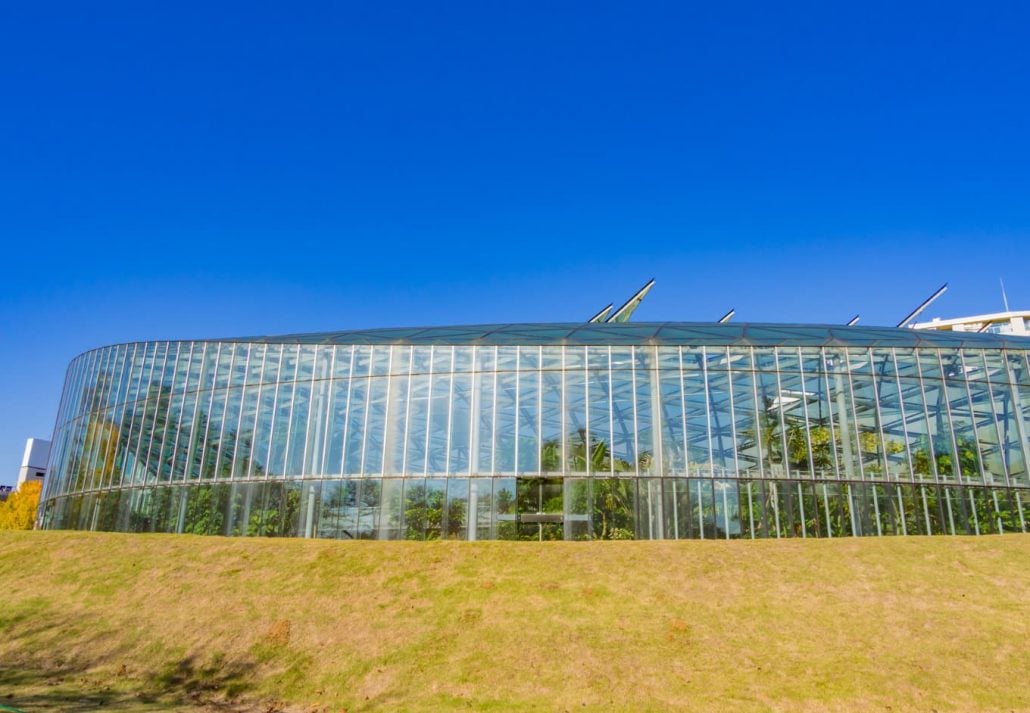
The Tamamo Pond, a serene algae pond, provides a tranquil escape compared to the garden’s busier spots. For a tropical retreat, visit the greenhouse near Okido Gate, a delightful and warm escape during colder months.
Hotels Near Shinjuku Gyoen National Garden
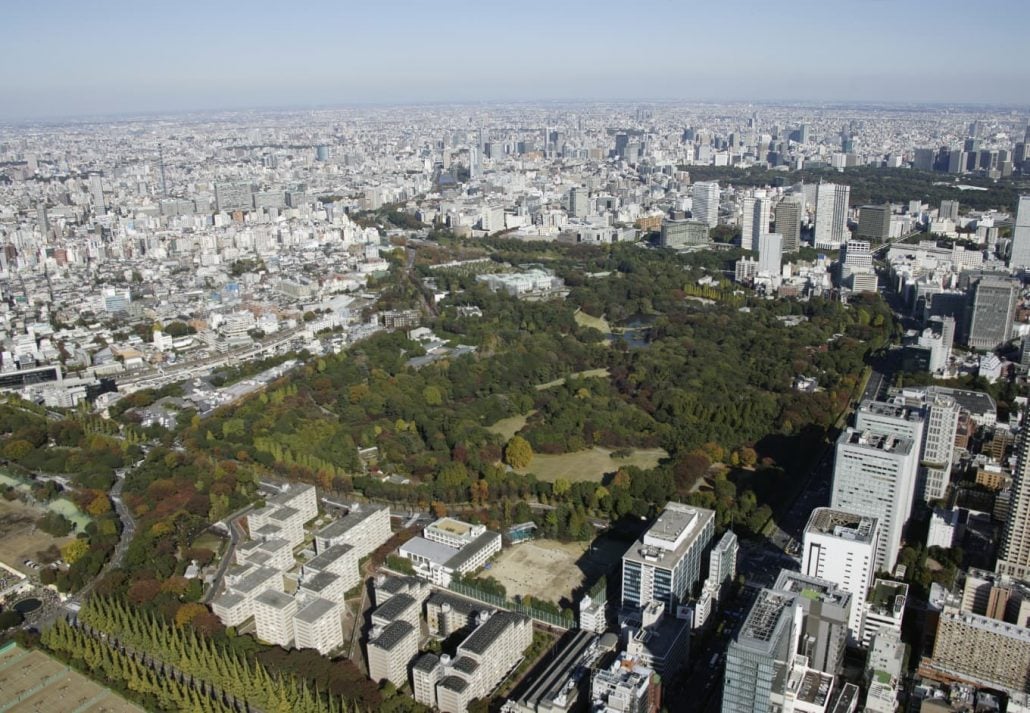
Apartment Hotel Shinjuku: Home away from home in the heart of Shinjuku. Enjoy a self-contained apartment with hotel amenities and experience the local life with a kitchenette in your room.
Hostel Pumpkey Tokyo: Budget-friendly and social. Pumpkey Hostel offers dormitory and private rooms perfect for solo travelers or groups seeking a lively atmosphere.
Shinjuku Kuyakusho-mae Capsule Hotel: Use this as a chance to immerse yourself in the unique capsule hotel experience. Enjoy a private pod, a luxurious bath, and a relaxing lounge area.
Frequently Asked Questions
When is the best time to visit Shinjuku Gyoen National Garden?
The garden is beautiful year-round, but spring (cherry blossom season) and autumn (for the colorful foliage and the chrysanthemum exhibition) are especially popular.
How to get to Shinjuku Gyoen National Garden?
Shinjuku Gate is a 5-minute walk from Shinjukugyoenmae Station on the Marunouchi Subway Line.
Are there any tea houses or restaurants at Shinkjuku Gyoen National Garden?
Yes, there are several tea houses and restaurants. Just outside, you’ll find Curry Kusamakura, a local favorite known for its exceptional eggplant curry. For a unique twist, Hamburg Will offers gourmet hamburgers with a Japanese flair. And if you’re craving ramen, Halal Ramen Ouka provides a delicious halal-certified choice.
Is Shinjuku Gyoen National Garden wheelchair accessible?
Yes, the garden is wheelchair accessible. There are ramps around to assist visitors with disabilities.
Can I bring food to Shinjuku Gyoen National Garden?
Yes, visitors are allowed to bring outside food. The park has scenic picnic spots where visitors can enjoy a happy and serene meal.

 ValVades
ValVades 








